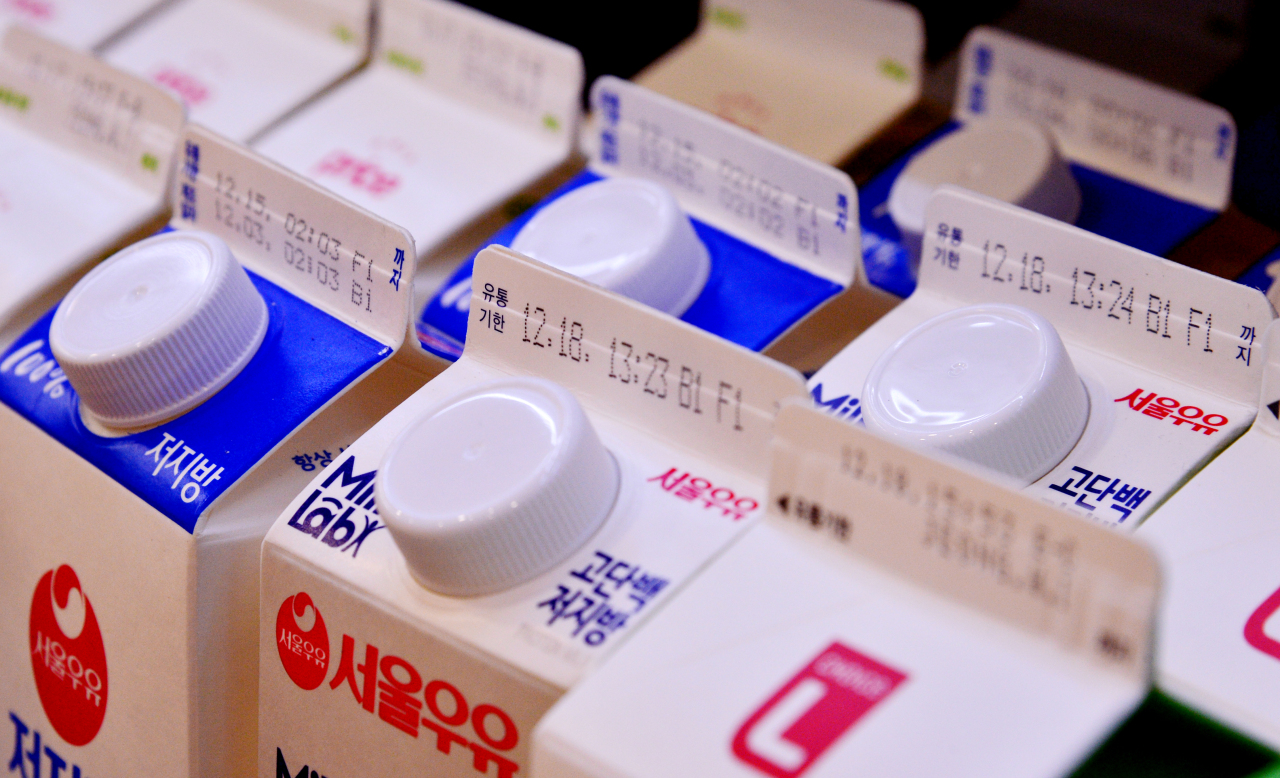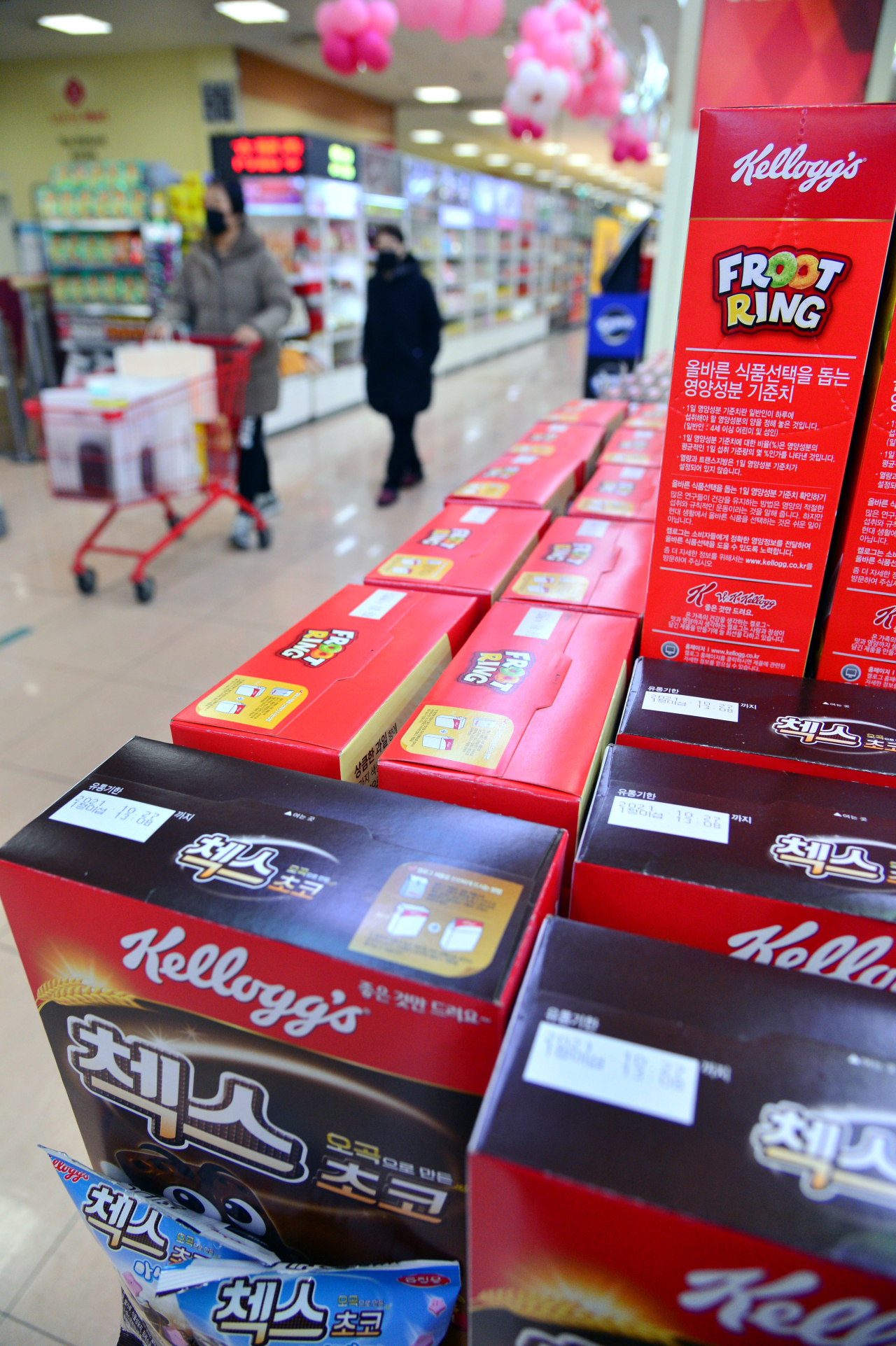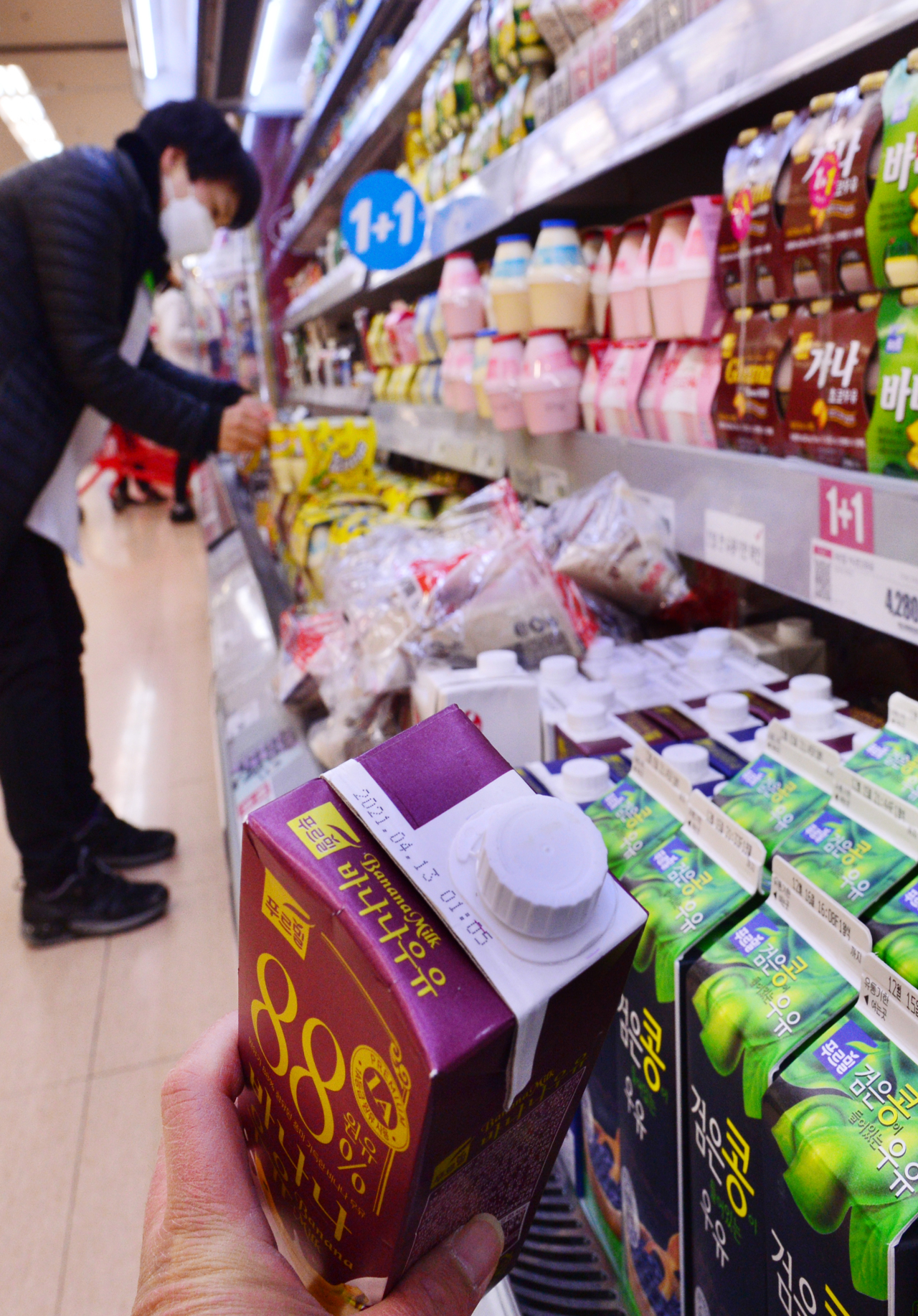 |
Milk products have sell-by dates on the bottles. (Park Hyun-koo/The Korea Herald) |
No one wants to get sick from eating food gone bad.
So it happens to be a common experience for Koreans to sniff and check the color of food to see if it is still edible, and to discard it when they find out a couple of days have passed from the “sell-by” date on the package.
But just as the term indicates, it is not the deadline for the product’s consumption. It is the date by which the product must be sold.
This confusion over the date labeling system is costing the society of about 1.54 trillion won ($1.5 billion) every year, to food waste and disposal expenses, according to the Korea Health Industry Development Institute.
In order to reduce food waste and get rid of the widespread misunderstanding, lawmakers are now reviewing whether to change the law to replace “sell-by” dates with “use-by” dates.
Yet, reforming the 35-year-old labeling system is proving tough, with both consumers and food firms lukewarm on the need for such a change.
 |
Salad dressings have sell-by dates marked on the bottles. (Park Hyun-koo/The Korea Herald) |
Sell-by vs. use-by
There are many labeling standards for packaged food: the date of manufacture, date of packaging, sell-by date, best-before date, and use-by date.
Normally, countries choose one or two of these ways to inform consumers about the product’s safe consumption.
So what is the difference between sell-by date and use-by date?
Sell-by date, as the name suggests, is aimed at retailers, informing them of the latest date when the product should be displayed on the shelves for sale. This means that retailers should dispose of the products that did not sell by the designated date.
In South Korea where sell-by date labeling was introduced in 1985, the dates are set at 60 to 70 percent of the shelf life of the food, which means it has quite some time left before it goes bad.
Use-by dates, which more directly refer to how long food lasts, are set at about 80 to 90 percent of the food’s shelf life.
A 2013 survey by KHIDI showed that, while 88 percent of 2,038 adult respondents understood the term sell-by date as the date until which the product was permitted to be on sale, 51.6 percent of the respondents still said it was the time when food should be thrown out.
The sell-by date system is a dying trend, and use-by dates and best-before dates which focus on quality, are more widely adopted.
The US implements both sell-by and use-by date labels on food, but most European countries have use-by date and best-before dates to inform consumers, according to data from Food Ministry. In the case of the UK, the country revised the previous sell-by labeling system in 2011.
In both China and Japan, food producers mark the use-by date, but not sell-by dates.
In 2018, Codex Alimentarius, the international guideline created by UN Food and Agriculture Organization and the World Health Organization, have removed the sell-by date in its general standard for labelling of prepackaged food, reflecting the concern that it misleads the consumers.
 |
Boxes of cereal bear sell-by dates.(Park Hyun-koo/The Korea Herald) |
Change on the way?
The Korean government and politicians want to keep up with the global trend and abolish the current sell-by date system, but public consensus appears to be missing.
Past attempts to reform the 35-year-old labeling mandate on food manufacturers or fix the widespread misunderstanding of it have proven to be difficult, as it is related to consumers safety.
In 2012, the government started a pilot project to require 18 products to mark both the sell-by date and use-by date on their products, but it soon fizzled out due to lack of public interest, and became simply a recommendation to indicate both dates.
Similar worries have been raised over a revision bill proposed by Rep. Kang Byeong-won of Democratic Party this year.
“The food quality can be affected by temperature conditions of the supply chain, and how the consumers store the item,” Rep. Choi Hye-yeong of the Democratic Party said during a meeting of the parliamentary Health and Welfare Committee.
“Sufficient research on safety should be conducted,” the lawmaker said.
Korean dairy producers also oppose the proposed new dating method, expressing worries over the way temperature-sensitive products are handled and stored at local retailers.
“Introducing the use-by date system now with lax monitoring of the integrity of the cold chain could lead to more spoiled milk on shelves,” Korea Dairy & Beef Farmers Association said in the statement issued early this month.
“This will dent the reputation of local milk products.”
 |
Milk products have sell-by dates on the bottles. (Park Hyun-koo/The Korea Herald) |
South Korea currently requires retailers to keep the refrigerator temperature below 10 degrees Celsius. But the association and food industry officials say the legal standard should be lowered to below 5 degrees Celsius, and a more effective monitoring system should be introduced.
The food ministry said it was aware of the matters pointed out, and that it found most of retailers in the country are following the legal storage temperature, citing research it conducted.
The two years of grace period that would be given after a revision bill passes, would also provide as the time to promote the new system and educate people, the ministry said.
If the revision bill, which is currently under review, passes early next year, the new use-by date labeling system would replace the sell-by date system by around 2024, industry insiders say.
Retailers are also gearing up for the envisioned change.
CU, a convenience store chain here, said the sales for its last minute food -- items that is nearing the sell-by dates -- have jumped since it started a discount promotion in June.
CU said it first started to offer 50-percent discount for fresh food items that have a day left before the sell-by date, and in November, the sales have seen a 16-fold increase from July.
“More people understand what sell-by date really refers to nowadays, and they less repulsed to buy these items that have close sell-by dates,” a CU official said.
By Jo He-rim (
herim@heraldcorp.com)











